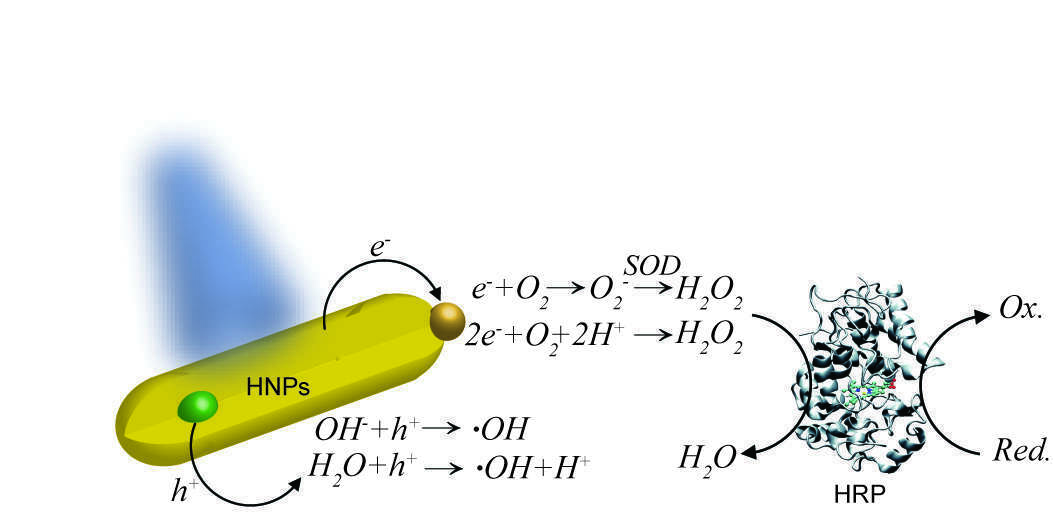
Photocatalytic Reactive Oxygen Species Formation by Semiconductor−Metal Hybrid Nanoparticles. Toward Light-Induced Modulation of Biological Processes
2Department of Biological Chemistry and the Edmond and Lily Safra Center of Brain Science, The Hebrew University of Jerusalem, Jerusalem
Semiconductor−metal hybrid nanoparticles manifest efficient light-induced spatial charge separation at the semiconductor−metal interface, as demonstrated by their use for hydrogen generation via water splitting. Here, we pioneer a study of their functionality as efficient photocatalysts for the formation of reactive oxygen species. We observed enhanced photocatalytic activity forming hydrogen peroxide, superoxide, and hydroxyl radicals upon light excitation, which was significantly larger than that of the semiconductor nanocrystals, attributed to the charge separation and the catalytic function of the metal tip. We used this photocatalytic functionality for modulating the enzymatic activity of horseradish peroxidase as a model system, demonstrating the potential use of hybrid nanoparticles as active agents for controlling biological processes through illumination. The capability to produce reactive oxygen species by illumination on-demand enhances the available peroxidase-based tools for research and opens the path for studying biological processes at high spatiotemporal resolution, laying the foundation for developing novel therapeutic approaches.


Powered by Eventact EMS